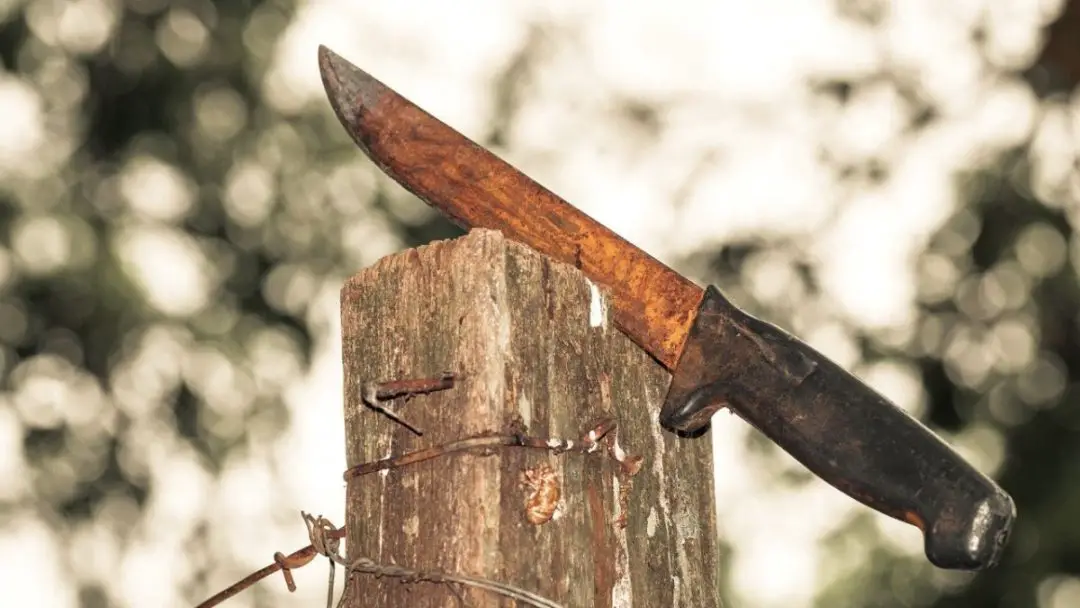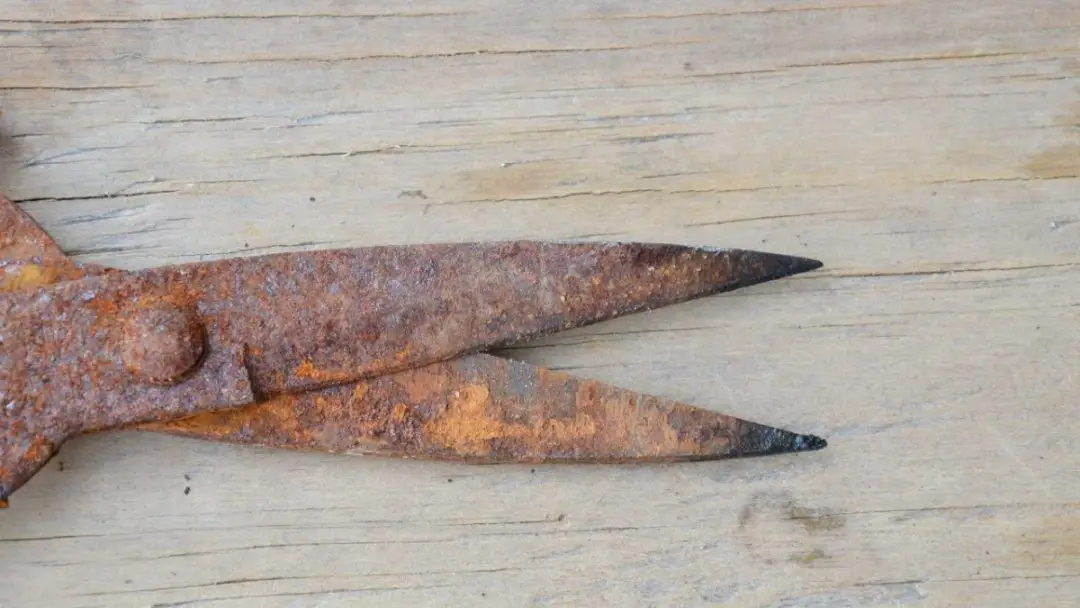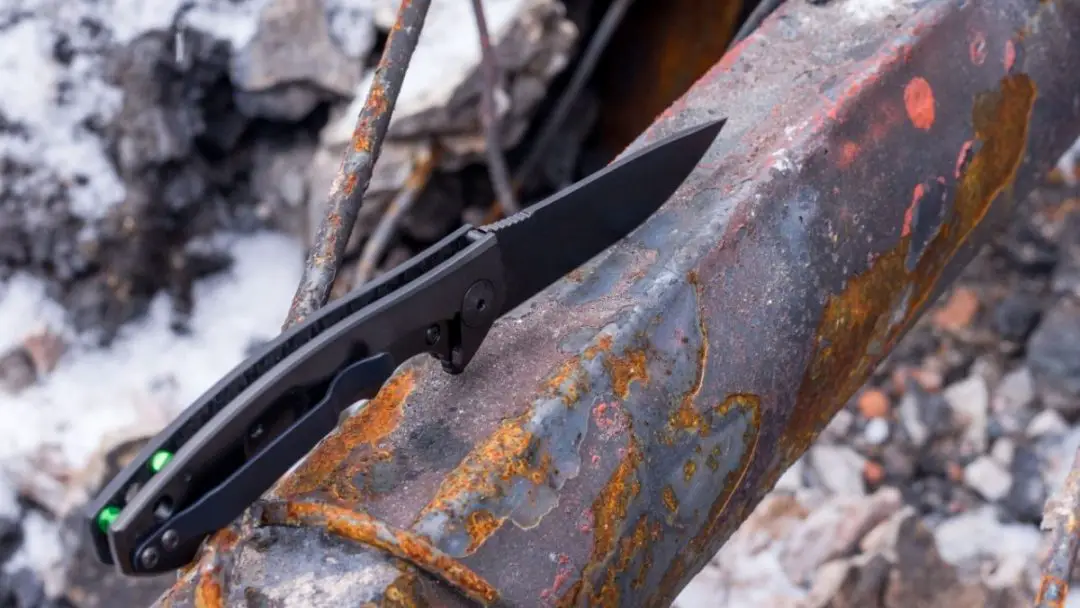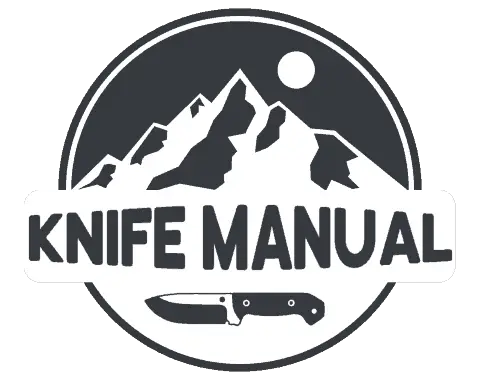
Rust forming on your knife blade seems like an inevitable thing that happens to almost every knife owner. But why do knife blades rust and is there a way to prevent this from happening? I did some research and this is what I found.
Rust is caused when oxygen and iron meet and a reaction happens called oxidizing. When moisture is present, rust forms and this is usually when you can visually see your knife blade rust. To prevent this from happening, build up a patina, clean your blade often, and store your knife in a dry place.
Preventing rust from forming on your knife blade is actually super simple and can be done in just a few minutes. A lot of people have this idea that rust is a really terrible thing to happen to a blade, but it isn’t that serious in most cases and can be fixed and prevented quite easily.
Table of Contents
What Exactly is Rust?
While you can prevent and clean off the rust from your knife blade, why not just go straight to the root of the problem: rust. Once you have a better understanding of what rust actually is, it will be much simpler to understand why it forms on your blade as well as how to prevent it.
Without getting too into the chemical side of what rust is, here is a simple, yet accurate, description of what rust is:
“Rust is the common name for a very common compound, iron oxide…. for iron to become iron oxide, three things are required: iron, water and oxygen.”
Source: HowStuffWorks
While this is a SUPER simple look at what rust is, it is enough for most people. Basically, rust is the same thing as iron oxide which is a very common compound. Iron oxide is formed when iron, water, and oxygen come into contact with each other.
This means that whenever your knife gets wet or is in a moist environment, there is the chance that it will form rust on the blade or any other steel part. This is an important thing to keep in mind when you are trying to prevent rust from forming on your knife blade.
What Causes Knife Blades to Rust
As I briefly mentioned earlier when we were discussing what rust actually is, the reason for rust to form is because three things come into contact with each other. Those three things are iron, water, and oxygen.
So pretty much if you could stop those three things from coming into contact with each other, no rust would form and you would be all good.
Well, if you’re anything like me and you live on planet Earth, you’re pretty much out of luck if you want to avoid oxygen. It’s kind of an essential thing that keeps us alive. And iron is a component of what your knife blade is made of, so good luck avoiding that one.
That just leaves water left as the only thing that we can really control when and where it comes into contact with our knives. So basically, if you don’t let any water touch your knife blade, you will never have to worry about it rusting ever again. Yeah, not quite.
Turns out that you don’t have to actually submerge your knife in a bucket of water for it to come into contact with the stuff. The water necessary for rust to form could just come from the moisture in the air or even another liquid that has a high percentage of water in it.
As you can see, it is nearly impossible to have these three things never come into contact with each other, especially because your knife (iron) is actually one of them. You just have to accept the fact that rust will eventually form on your knife and just take the steps to prevent this from happening and remove it when it does.

Ways to Prevent Rust From Forming
While it is nearly impossible to completely eliminate the possibility of rust forming on your knife blade, there are certain measures that you can take to lower the possibility of it happening.
These techniques and methods are also not guaranteed to stop rust from forming on your knife blade. Just think about it for a second, the three things that form rust (iron, water, and oxygen) are all around us every day.
The large majority of knives have some percentage of iron in them, oxygen is in the air that we breathe and water is also in the air and all around us. There is just no way that we can stop oxygen and water from coming into contact with our knife blades. It’s just impossible.
These methods to prevent and stop knife blades from rusting will work to a certain extent but are not foolproof. You just have to accept the fact that rust will eventually form on your knife blade at some point, and you will need to clean and remove it. It’s just something that comes with owning a knife.
Build Up a Patina On Your Blade
One of the best and most long-lasting ways to prevent your knife blade from rusting is to form a patina on the blade.
The major downside to forming a patina on your knife blade is that it often changes the color of your blade. While many people don’t mind this because it will prevent most rust from forming on their blade, if you don’t want to change the color of your blade one of the other rust prevention methods in this article might be a better choice for you.
A patina is basically a type of corrosion that happens to a knife blade that is very similar to rust. But, let me be clear here, it is not rust. A patina is similar in many ways to rust, but it actually helps to prevent it.
There are two main types of patinas that you can form on your knife blade. Forced patinas and natural patinas. There are many different pros and cons to each, but they basically provide the same amount of rust protection to your knife.
First, let’s talk about natural patinas. Basically, if you just use your knife a lot and take good care of it, a natural patina will usually form on the blade. In fact, sometimes the term “patina” is actually used to just describe the aging and wear on a knife blade.
Depending on what you cut with your knife often, different types and colors of natural patinas may form. It will often take a while, but forming a natural patina is a good option if you use your knife a ton and are able to closely monitor your knife blade to make sure that rust isn’t forming while you wait for your patina.
The second type of patina is a forced one. Forced patinas are basically the same thing as natural ones, but you do certain processes to your knife blade to speed up the process of formation. Forced patinas are a great option if you just want a quick barrier to stop most rust from forming on your blade.
There are many methods to forcing a patina, but they are mostly based on just putting your knife blade in contact with things that have citrus and acidic acids in them. These things speed up the process of patina formation on your blade.
Keep Your Knife Clean

Just plain old keeping your knife blade clean is a really great way to keep your knife clear of rust. It might be a little time consuming, but it’s one of the most sure-fire ways to keep rust from forming on your blade.
Many people use their knives and just put them back in their pocket or sheath without a second thought. But the things that the knife just touched when they were using it might have been wet and started rusting their blade.
The best thing to do to make sure that your blade isn’t rushing from the moisture on the things that you are cutting is simply cleaning the blade when you are done. It’s as simple as that.
If you are a busy person that just doesn’t have time to stop what they are doing and go clean your knife when you are done using it for a task. Simply cleaning it once a day whenever you have free time will be more than sufficient to stop most rust from forming.
The cleaning process doesn’t have to be super rigorous either. After you use your knife for a task, just carefully wipe the blade down with the corner of your shirt or a clean towel. If your knife blade is super dirty, run it under some water to get the grime off and then thoroughly dry it with a towel.
Just be sure that you get all the moisture off of the blade whether you wash it in water or are just wiping it down. That’s the key to keeping your blade free of rust.
In some cases, you might need to do a deeper and more thorough cleaning of your knife, but just a simple wipe down will do wonders in regards to preventing rust. It’s as simple as that, yet many people don’t do it and they suffer the consequences.
Store Your Knife Properly
While you can clean and take care of your knife as much as you want to try to prevent rust, if you don’t store it properly when you aren’t using your knife most of that work will have been in vain.
You can keep your knife blade spotless and dry after every time that you use it, you can build up a nice patina on the blade, but if you store your knife in a place that promotes rust, it will rust. It’s the sort of thing that you don’t realize until it is too late and your blade is already covered in a bunch of rust.
When you are not using your knife the best place to store it is out of its sheath and in a clean, dry drawer or cabinet. Just make sure that the place that you store it doesn’t have major temperature changes and is nice and dry.
If you are worried about your knife getting scratched or hurt while it is out of its sheath, either just clear the drawer or cabinet that you store it in or lightly wrap it in a cloth. Though usually, you will have nothing to worry about and your knife will be just fine out of its sheath when you are not using it.
When you are out and about and have our knife on you, keep it in its sheath (if it has one) or in your pocket. The more you protect and keep it clean when you are outdoors, the less you will have to clean it and the less likely it will form rust on the blade.
Also, take the necessary precautions when you are out and about to make sure that your knife doesn’t get wet, and if it does make sure to dry it off very well. Water is one of the things that causes rust and you can often control when it comes into contact with your knife.
Overall, just keep your knife nice and dry when you are not using it as well as when you are. Just be aware of where you place your knife when you are done using it, and be sure that the environment or place where you put it isn’t wet and will promote the formation of rust on your blade.
Catch and Clean Rust Early
This is one of the more obvious ways to prevent your knife from rusting. Just clean and remove the rust as soon as you notice it so that it doesn’t get worse.
Personally, I just sit down for about twenty minutes once a month and just check all my knives for rust. I’ll go through all of my drawers and bags and even look at the ones that I haven’t used in a while.
This just ensures that I catch a knife that is rusting sooner than later so that I can remove it while it is still manageable. It also just gives me peace of mind to check them once a month and know that all my knives are in good shape and free of rust.
When inspecting your knife for rust, look for any red, brown, or orange discoloration. Be careful and don’t get a patina on your blade mixed up with rust. They often look similar, but patinas are usually more gray and black colored. Also, look over your entire knife because rust sometimes formes on the handle.
If you positively identify and find some rust on your knife, don’t freak out. There are many solutions and methods for removing rust from a knife. There are many effective methods that you can do using things that you probably already have in your house. I’m not going to go into the exact process in this article, but you can look at my article on how to remove rust from a knife for a step-by-step guide.
Just check your knives often for rust and make sure to get rid of it as soon as possible so that it doesn’t become a huge deal to remove it. After you have removed any rust from a knife, try to reassess and do take some preventative measures like the ones mentioned above in this article to stop it from happening again.
Conclusion
You have to understand, rust is a natural and very common thing to happen to a knife blade. If your blade starts to form rust, don’t panic, and just work to remove it. Once it has been taken care of and your blade is clear, follow the methods in this article to help prevent rust from forming on your blade again.
There just is no definitive way to stop your knife blade from rusting. All of the methods for stopping rust in this article are just preventative measures. Even if you do all of the things to prevent it, your blade might still rust. There are just so many different factors that are at play.
The good thing is, as long as you take good care of your knife and take the steps to prevent your knife from rusting, the likeliness of it happening is MUCH lower than if you didn’t do these things.
Overall, there is only so much that you can do to stop your knife from rusting, and then it’s just out of your hands. But by knowing what exactly rust is, what causes it, and how to prevent it, you stand a much better chance of avoiding rust on your knife blade than before you knew these things.

